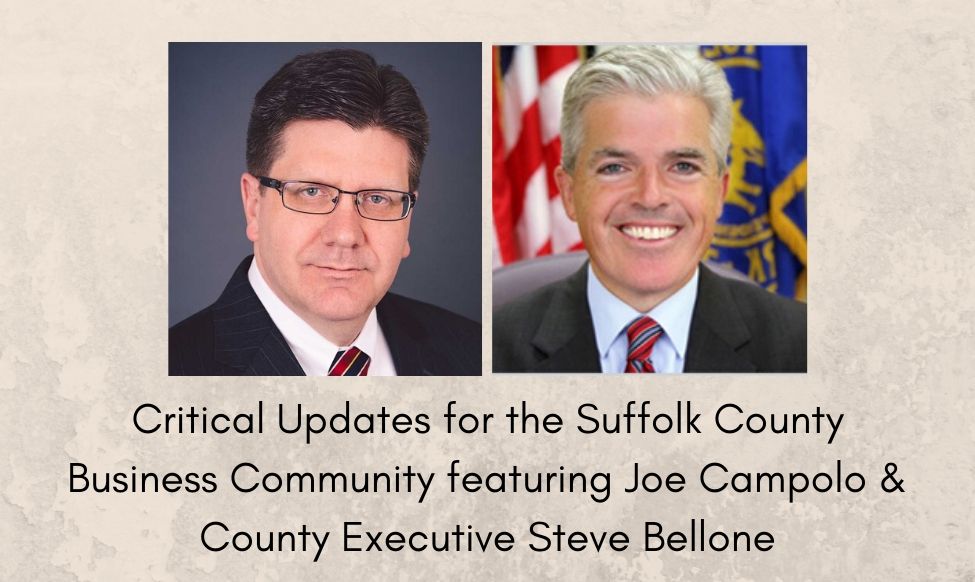Neighbors Oppose Long Island Innovation Park Apartments
by Nicholas Spangler
A Smithtown proposal to rezone part of the Long Island Innovation Park at Hauppauge for mixed-use projects that could include apartments sparked an hourslong clash in an online public hearing.
The bill would permit buildings that mix commercial, office and residential uses on 13 of the industrial park’s 450 parcels that are seven acres or larger. Smithtown Supervisor Edward Wehrheim has said rezoning would allow developers to build up to 1,000 apartments, though a spokeswoman said the actual number was likely to be lower. No developers have submitted applications and some of the buildings on eligible parcels have tenants under lease or are owner-occupied.
“We can pay more taxes or encourage economic development to offset those taxes,” Joe Campolo, chairman of the Hauppauge Industrial Association of Long Island, which represents businesses in the park and supports the legislation, said at the hearing Thursday.
But some current residents of neighborhoods near the 1,650-acre park said rezoning would add traffic and burden local schools. “It’s not an area that was ever designed or meant for people to live in,” said one man who described himself as a 30-year resident.
Thomas Kriklava, operations manager for the Central Islip-Hauppauge Volunteer Ambulance Company said department officials had “serious reservations about this project,” but he did not elaborate or respond to a voicemail.
David Barshay, president of the Hauppauge school district board of education, asked for legislation to be delayed. “Give us time to figure out whether we can even absorb” children who might live in the apartments, he asked. The district, which faces a budget shortfall of more than $2 million this year, spends more than $20,000 per student, he said.
Supporters say that at full build-out apartments would add about 90 children to a school district that has lost hundreds more than that in past years and that the benefits of new development outweigh the costs of increased demand for services. A 2019 study by the Real Estate Institute at the Stony Brook University College of Business of 14 apartment complexes found public school enrollment increased by less than one student per 11 apartments.
Apartments and park residents are central to a plan backed by park stakeholders and town officials to attract new businesses in areas like electronic commerce and financial services which they say would create high-paying jobs and tax receivables.
“They are the engine,” said James Coughlan, a principal in Tritec, an East Setauket-based real estate firm that could redevelop one of its buildings under the proposed legislation.
New residents would supply a built-in customer base for retail; amenities built to serve them like green spaces and walkways, along with the promise of a quick commute, would also attract new firms looking for perks for their own workers.
Campolo envisioned market-rate rents for one-bedroom apartments starting at $2,500. At least 20% of the apartments would be designated as workforce housing, with rents pegged to area median income.
The park generates $19 million in tax receivables annually for the town and $45 million for the school district, keeping hamlet residents’ property taxes among the lowest in Suffolk County.
But about 60 of its parcels are vacant and 314 are used for warehouses or storage, and Coughlan said finding tenants had grown harder over the past five years. That problem could be exacerbated by the pandemic and competition from projects like the Ronkonkoma Hub, he said. “There’s going to be a new paradigm for where people want to work,” he said.
Any project proposed under the bill would need multiple town approvals and would have to meet design criteria to be considered for a special exception by the Town Board.
Complaints by some residents last week that advertisements for apartments for rent indicated projects at the Hauppauge park were already approved may be tied to a Willets Path sign that in fact advertises apartments in Melville, town spokeswoman Nicole Garguilo said. No projects are underway and the public hearing for the rezoning bill will stay open for three weeks to allow further written public comment, she said.
Town leaders also conducted two less contentious public hearings at the May 21 town meeting, held over Zoom. They were the first such hearings in town history and Garguilo said 400 people watched or listened, more than at any in-person meeting in the past four years.
Anthony Coates, a Head of Harbor resident and civic leader, and We Are Smithtown civic association president James Bouklas said the hearing should have been delayed until in-person meetings are possible and criticized town leaders for pushing through what Coates called the “Queensification of Smithtown.”
Read it on Newsday’s website here.









